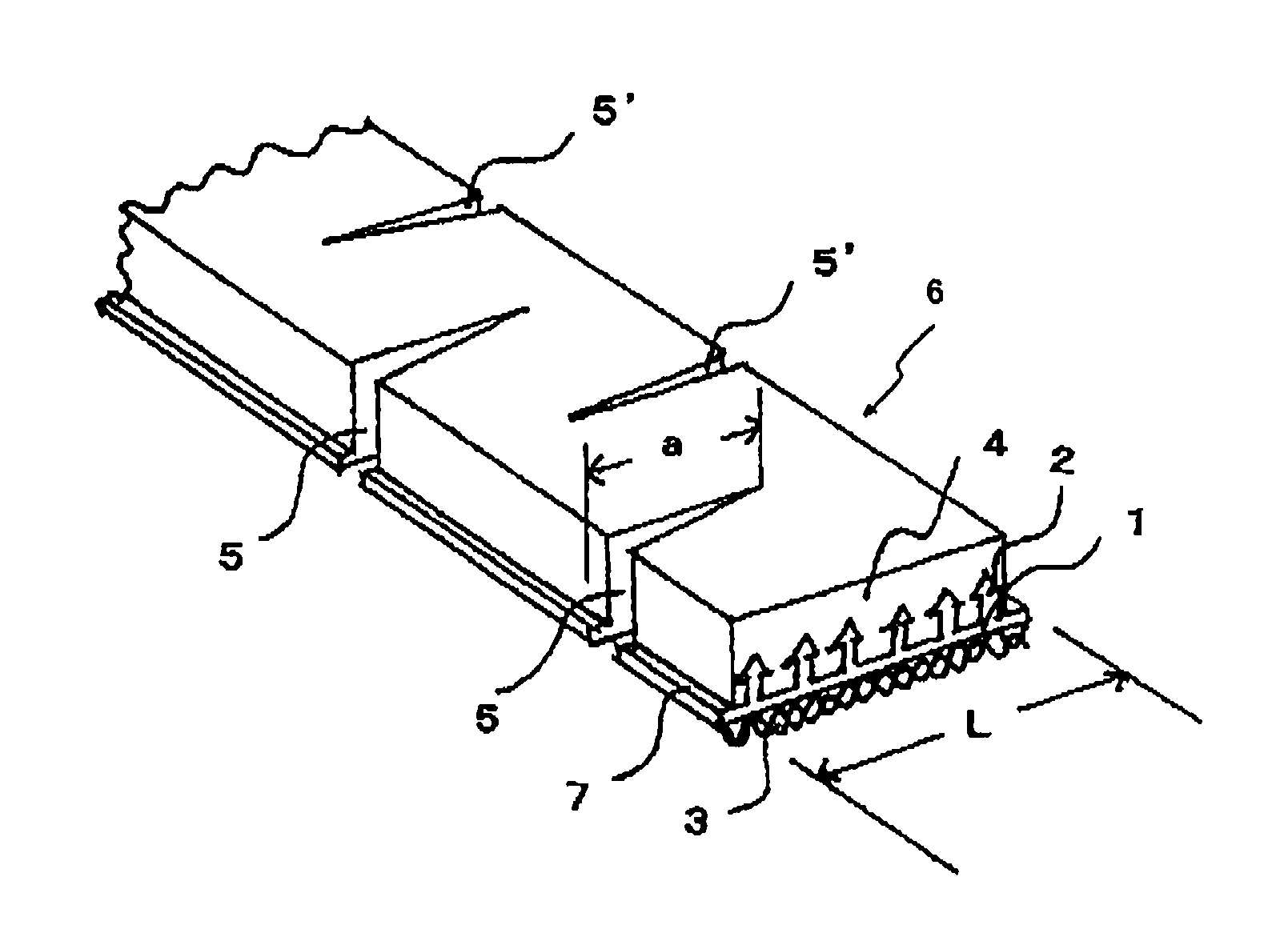Hooking member for in-mold molding
a technology of in-mold molding and fastening members, which is applied in the direction of snap fasteners, press-button fasteners, thin material processing, etc., can solve the problems of difficult to fit the fastening member into the recess, difficult to bend the hook member three-dimensionally, and difficult to bend the hook member roundly. , to achieve the effect of convenient bending, smooth bending and high quality appearan
- Summary
- Abstract
- Description
- Claims
- Application Information
AI Technical Summary
Benefits of technology
Problems solved by technology
Method used
Image
Examples
example 1
[0065]A polypropylene resin composition was prepared by adding 10% by weight of an olefin-based elastomer (V0131 manufactured by Sumitomo Chemical Company, Limited) to a polypropylene resin containing 0.5% by weight of titanium oxide. The polypropylene resin composition was extruded from an extrusion nozzle having a slit into a strip of shaped article which has a cross section as shown in FIG. 3, in which the engaging elements 2 was formed on the upper surface of the substrate 1 and the anchoring elements 3 was formed on the back surface of the substrate. The continuous ridge of engaging elements 2 was slit up to its foot at intervals of 0.3 mm and then the strip of shaped article was stretched by 3 times in the lengthwise direction, to produce a main structure M of the mold-in fastening member.
[0066]The obtained main structure M of the mold-in fastening member had the substrate of 12 mm wide and 0.5 mm thick. The substrate had on its upper surface the arrowhead hook engaging elemen...
example 2
[0074]A cushion having the fastening member was produced in the same manner as in Example 1 except for changing the wedge-shaped notches to the simple slits. The simple slits were formed by simply cutting with a cutting blade having a width of 0.2 mm without removing a portion of the substrate, elastomer layer and anchoring elements in wedge form. The obtained fastening member was slightly poor in the lateral bending. As compared with any of comparative examples, however, the fastening member bent in good conformity with the three-dimensional shape and fitted to the mold recess properly. In the cushion produced by filling the mold with the foamable liquid resin, the elastomer layer was substantially free of the foamed urethane and the elastomer layer was easily peeled off from the engaging elements from its one end. The widthwise end portions were completely embedded in the foamed polyurethane. With such end portions and the anchoring elements, the fastening member was not peeled of...
PUM
| Property | Measurement | Unit |
|---|---|---|
| width | aaaaa | aaaaa |
| width | aaaaa | aaaaa |
| width | aaaaa | aaaaa |
Abstract
Description
Claims
Application Information
 Login to View More
Login to View More - R&D
- Intellectual Property
- Life Sciences
- Materials
- Tech Scout
- Unparalleled Data Quality
- Higher Quality Content
- 60% Fewer Hallucinations
Browse by: Latest US Patents, China's latest patents, Technical Efficacy Thesaurus, Application Domain, Technology Topic, Popular Technical Reports.
© 2025 PatSnap. All rights reserved.Legal|Privacy policy|Modern Slavery Act Transparency Statement|Sitemap|About US| Contact US: help@patsnap.com



